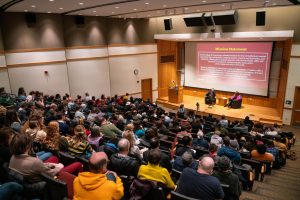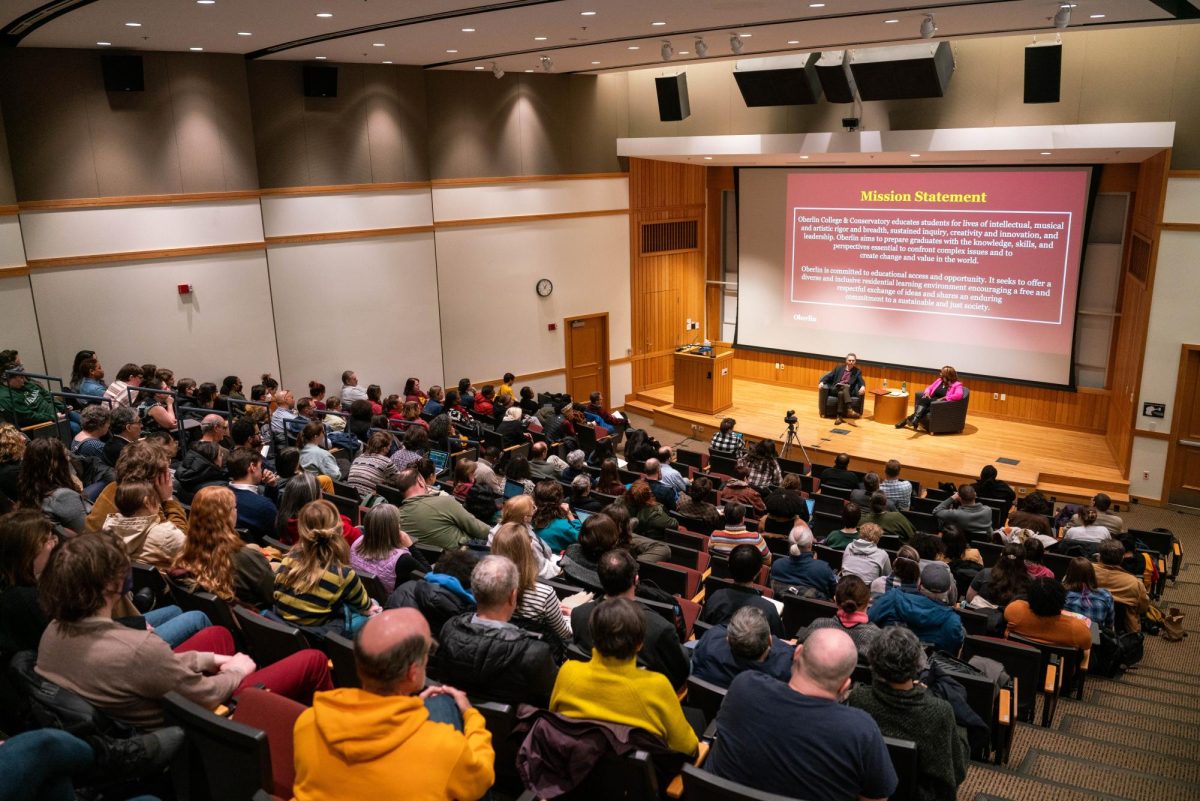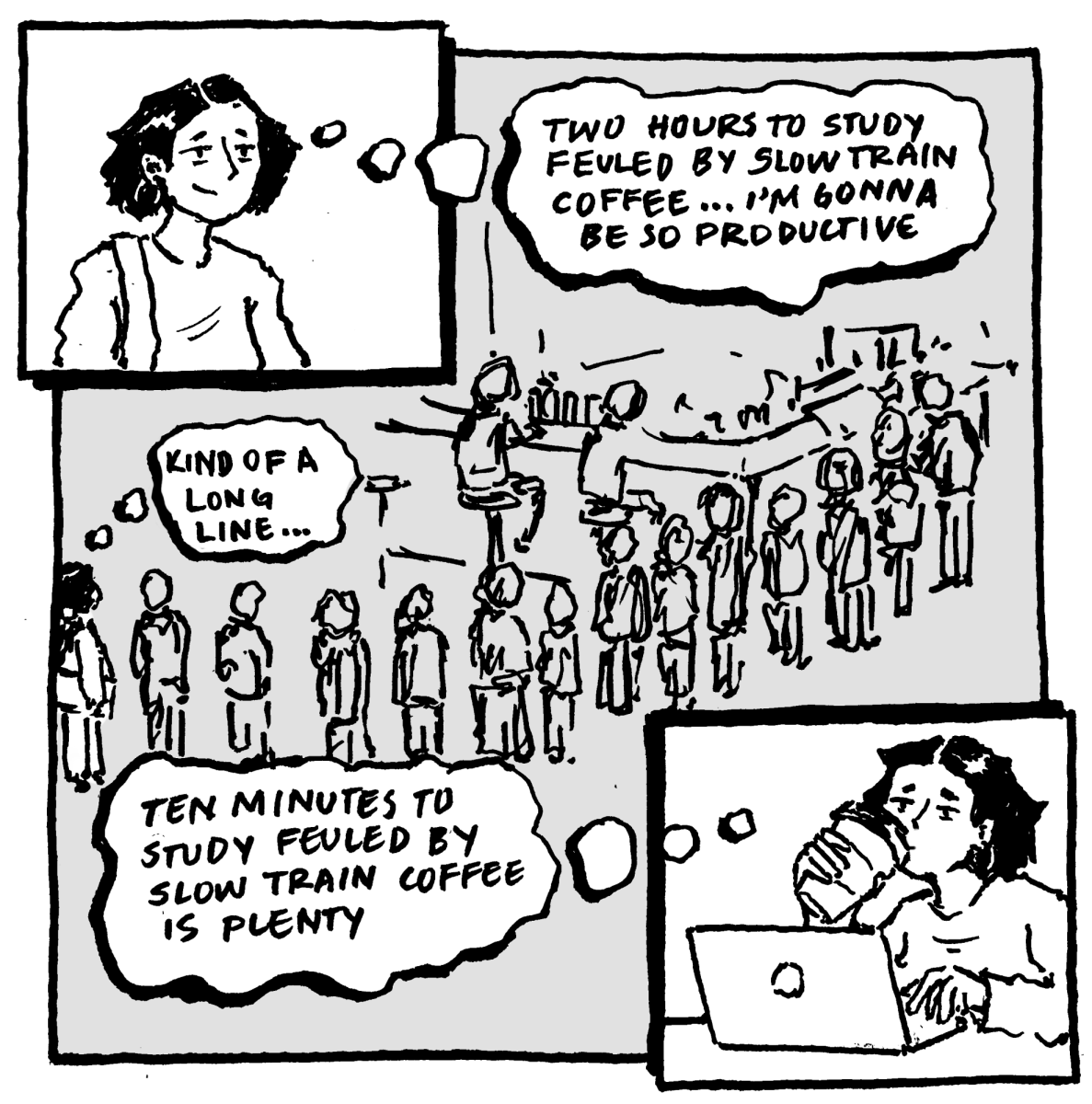OSCA Membership Poses Challenges for Student-Athletes
December 7, 2012
Chances are if you were to use the “co-op knock” in a pre–football game huddle to show your support for a particular play, your teammates would give you a puzzled look. Varsity athletes are noticeably absent from the Oberlin Student Cooperative Association roster.
A few weeks ago, OSCA assembled a caucus to try to determine why athletes are so underrepresented in the organization as well as potential ways OSCA could improve itself to garner more athlete participation.
Many issues were brought up, ranging from athletes’ fears that co-ops cannot provide enough food and protein to meet their heightened demands to the conflict between the structured meal times of co-ops and athletes’ stringent schedules.
Though they certainly aren’t the majority, some varsity athletes do eat in OSCA, and they have largely been able to overcome these apprehensions. Emma Lehmann, a sophomore cross country and track runner who eats in Keep Cottage, has loved her experience in OSCA and wishes she had been a member last year as well.
“I think it’s kind of a myth that eating in OSCA as an athlete is impossible,” said Lehmann. “I’d probably make worse food choices in [Campus Dining Services].”
OSCA membership secretary and College senior Jessie Burnside-Clapp, who was the all-OSCA nutrition coordinator for part of the Spring 2011 semester as well as the entirety of the 2011–2012 school year, believes that the nutritional concerns athletes have about eating in OSCA are well founded, but that this does not have to be the case.
“There’s this attitude in OSCA that you have to take a ‘cooperative portion’ and sometimes for athletes what is cooperative for the co-op is unhealthy for them when you are burning through a lot of calories,” said Burnside-Clapp. “I think OSCA totally has the support network necessary to make it possible for athletes to do things.”
The issue, in Burnside-Clapp’s view, is an educational issue: People both outside and inside OSCA do not realize the resources OSCA members have at their disposal. If athletes have nutritional needs that require more food than other co-op members, “it’s completely legitimate for [them, as] equal member-owners of OSCA and equal members of their co-op, to ask their food buyers to purchase things just for them,” said Burnside-Clapp. She proposed that co-ops could even order protein supplements for athletes if they felt this would be helpful.
Jodi Helsel, a sophomore field hockey and lacrosse player who eats in Harkness House, said that for those outside of OSCA the “protein thing” seems to be the biggest deterrent. For her, however, the main difficulty she has faced is scheduling.
Currently, dinner in nearly all of Oberlin’s co-ops is at 6:20 p.m., which can be difficult for athletes to make given that their practices and games often end much later. To combat scheduling conflicts, co-ops have a “saved plate” system in which members who know they will be missing a meal can have a plate of food set aside for them to eat at their convenience. A plate of re-heated food, however, is not necessarily desirable and many cooks will follow the “cooperative portion” mantra when assembling these plates, leaving many athletes hungry after a long workout.
To compensate, many student-athletes frequently find themselves eating in CDS. “I ended up spending a lot of money in DeCafé,” said Meredith Siefert, a junior volleyball player who has been in Pyle Inn for two semesters now.
This is often costly and detracts from OSCA’s economic advantage over the campus dining plan. “I guess I could have gone and made my own food in the co-op instead, but that takes up so much time,” said Siefert.
Furthermore, missing meal times forces athletes to eat on their own, which is by no means desirable. “What I like about being in a co-op is eating with that community,” said Siefert.
Another athlete, who preferred to remain anonymous, also expressed dissatisfaction with the saved plate system. “To be honest, I am more likely to either skip dinner entirely or eat in CDS than to eat my save plate alone.”
There are simple steps that co-ops could take to address these scheduling issues. Though meal times are uniform across almost all co-ops, there is nothing in the OSCA continuing policy that says this must be the case.
“Something that OSCAns could do during interim is vote on meal times,” proposed Siefert. “I think that would be really helpful even if you just pushed it back to 6:30 or something.”
There are other barriers between athletes and co-ops, however, that are less tangible and whose fixes are not so simple. The issue of stigma certainly rings true with a lot of athletes.
Helsel said that she has encountered a stigma among athletes around Harkness in particular, though she also conceded that this may be a more general issue since “Harkness is often stigmatized by other aspects of Oberlin: other co-ops, general student population, professors.”
There is also the fear of a bias that goes the other way. “Coming into OSCA, I was sort of nervous that there would be a stigma against me as an athlete in OSCA. [I was] kind of nervous how that would be perceived because there is a stigma that athletes here are dumb, ignorant and that they’re not Obies themselves,” said Siefert. Luckily, since joining Pyle, that “hasn’t been my experience at all,” she added.
The way to overcome these preconceptions is to have more overlap between the OSCA and student-athlete communities, but, it is often difficult for individuals to be the trailblazers.
“I guess it’s not really a matter of OSCA doing anything and more dependent on individuals willing to be the first on their team to join [OSCA] in order to encourage other tentative athletes to participate as well,” said Lehmann, who joined Keep at the same time as three of her cross country teammates. “It’s nice to have a few people in the same situation as you.”
Perhaps as education about OSCA’s resources improve, athletes will lose some of their reservations, become OSCA members and consequently dissolve many of the artificial barriers between these two sizable communities.






















